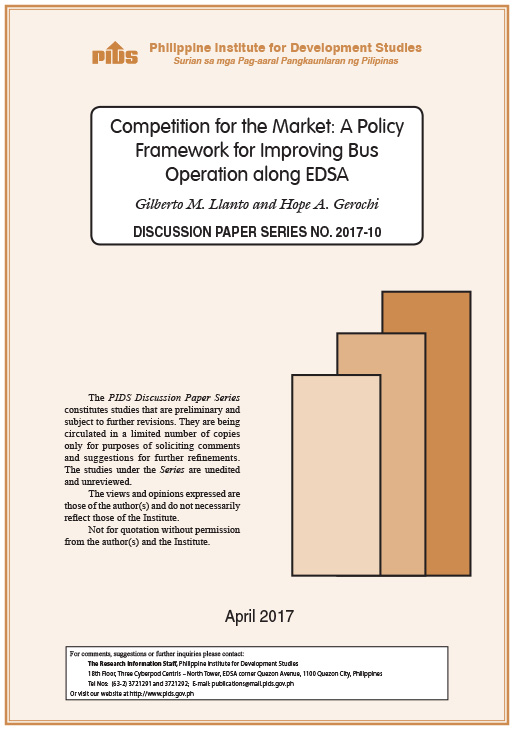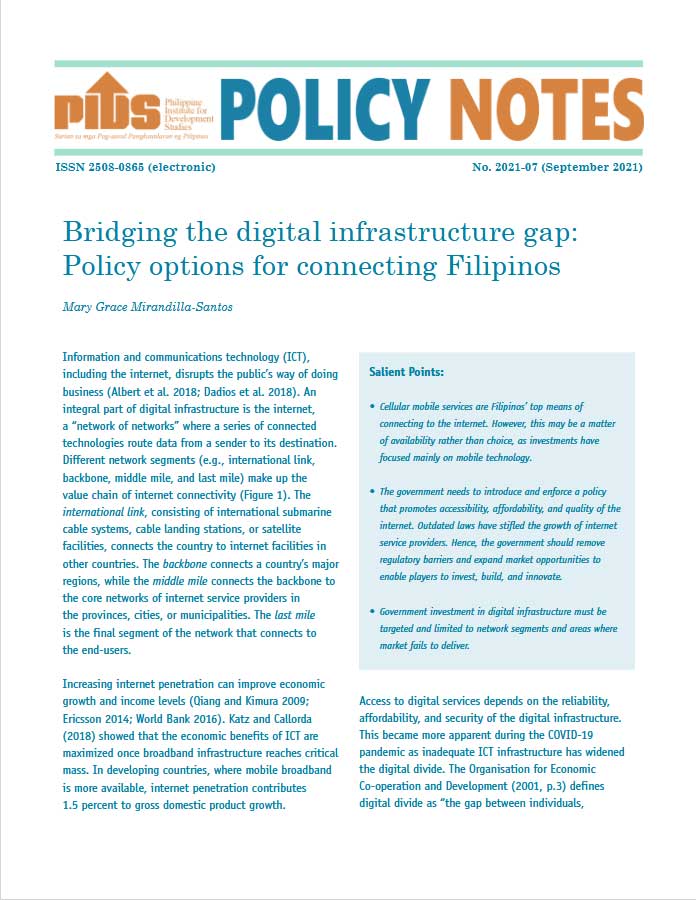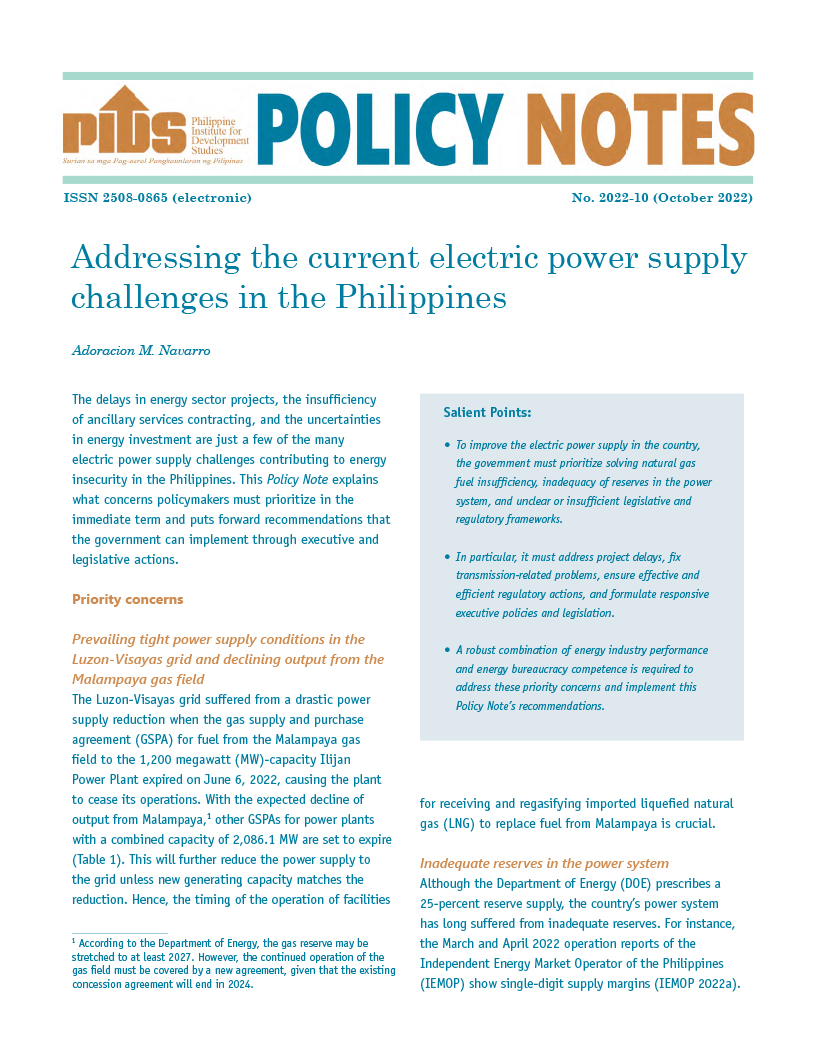The EDSA bus market is fiercely competitive. In theory, allowing competition among many bus operators is expected to result in cost-effective and reliable transport services, and efficient use of roads. However, in reality, the outcomes are far different: daylong traffic jam and poor bus service along Metro Manila's most important road artery.
This paper examined an option proposed by some quarters that consolidating bus operation along EDSA will solve road congestion. It was thought that having fewer but bigger bus operators will be the solution. Based on a review of country experiences, this paper argues that one way to address road congestion and other market failures in the bus markets is to shift the regulatory framework for bus transport services from the current competition "in the market" (the status quo) toward competition "for the market". Bus consolidation is an initial step to relieve the roads of traffic congestion, but it is not a sufficient condition for sustainable quality bus service. However, casting bus consolidation within a competition for the market regulatory framework presents a better and more workable option for improving bus transport services in EDSA.
The alternative regulatory approach called "competition for the market framework" provides a stronger incentive for bus operators to consolidate because a competitive tendering mechanism is used to select an optimum number of formal bus transport operators that will serve the market. Government takes more control of critical aspects of bus services (design of the bus network, quality standards, frequency, among others), which, thus, provide an opportunity to address the market failures that are inherent in liberalized urban bus markets. The government via its pipeline of bus rapid-transit (BRT) projects--including one being prepared for EDSA--seems to lean in favor of this framework. To be effective and to encourage the application of this new framework also to non-BRT corridors, complementary reforms have to be implemented in parallel and these would include improving the capacity of regulatory agencies, institutions (rules of the game), procurement, contract monitoring, and traffic management.
Citations
This publication has been cited 5 times
- Chanco, Boo. 2017. Impressive, sana!. Philippine Star.
- Darwin G. Amojelar. 2017. PIDS wants reforms in bus transport sector. Manila Standard Today.
- Mayvelin U. Caraballo. 2017. Reform bus market to fix EDSA traffic . Manila Times.
- Myla Iglesias. 2017. Reform MM bus transport system to ease traffic: PIDS. Malaya.
- Ordinario, Cai. 2017. PIDS study warns against revival of ‘Love Bus’. BusinessMirror.













